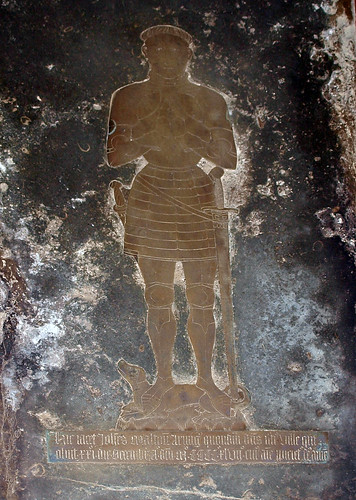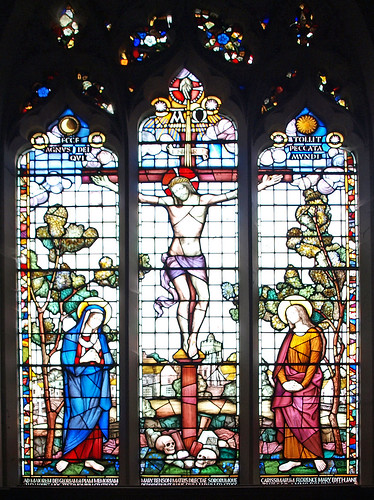ST MARTIN. Norman nave with S doorway (one order of columns, one-scallop capitals, roll-moulding) and one S window. Chancel Perp, W tower also Perp but much repaired in brick in the C16 or C17. Behind the battlements appears a minute cupola with a weathervane dated 1679. - CHEST. ‘Dug-out’, 7 ft long, heavily bound with iron; C13 or C14; nave W end. - PLATE. Cup with Elizabethan stem and bowl of 1619; Paten on foot of 1712. - BRASS to John Maltun d. 1447, in armour, the figure 3 ft long.
LITTLE WALTHAM. Many of the farms and cottages round about go back to the 16th and 17th centuries, but a house near Winchford Bridge was built in the 15th century and has attractive woodwork. The church is older still, for its nave comes from Norman England and has kept a doorway and two windows all the time. The chancel was rebuilt about 1400, and the embattled tower is less than a century younger. Its weathervane of 1679 flies as a pennon above the handsome walnut trees in the churchyard. There is a spacious timber porch with beams and cornices and other woodwork by Tudor carpenters; a Tudor door on its old strap-hinges, a fine brass of John Maltun of 1447 who is shown with a dog at his feet and two tiny white cherubs; and an inscription to John Aleyne of 1663. John was a benefactor of the village who left money for the teaching of apprentices, and part of a lad’s leather coat worn by one of them is still a curious treasure here. It is kept in a church chest, a magnificent object hollowed out of a sycamore about 700 years ago, and strongly bound with iron straps. Another chest was made in Shakespeare’s day, and has a leather coat not in it but outside, the arched lid being covered with leather and initialled with the heads of nails.



No comments:
Post a Comment